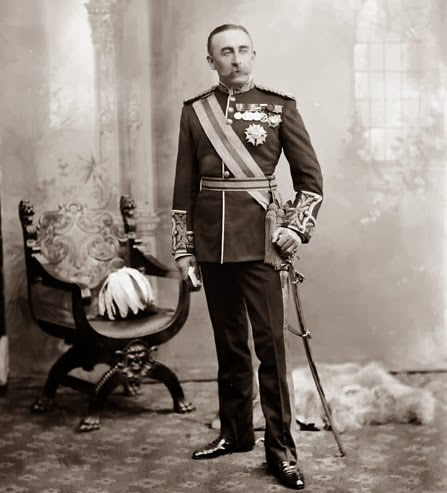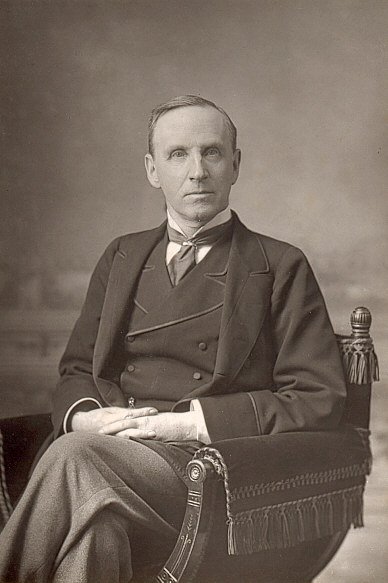 |
| First Indian National Congress 1885 |
The Indian National Congress (INC) was a leader of the Indian freedom movement against
British colonial rule. One of the
success stories of the nationalist struggle in Asia, the congress was established in 1885.
A political consciousness was arising in the latter part of the 19th century among Indian intelligentsia, and various people emerged to raise their voices against foreign rule. The sincere endeavor of
Allan Octavian Hume (1829–1912), along with the efforts of Indian leaders, resulted in the emergence of the INC on December 25, 1885.
From its first meeting, held in the city of
Bombay (now Mumbai), the INC worked relentlessly to end alien rule in India. In its initial phases the INC was very modest in its demands, such as expansion of legislative councils and an increase in governmental grants to indigenous industries. It even pledged loyalty to the
British Empire. It increased sentiments of national unity and rose above religious, caste, and regional divisions.
Dadabhai Naoroji (1825–1917), the president of the INC in its second and ninth sessions, argued that the British government was responsible for poverty in India. The true character of the British Empire was revealed by various demands by the congress. A base also was created for the Congress Party, from which later leaders could work for the cause of
Indian independence.
But a gradual disillusionment developed against the moderate leadership. A rift occurred, and the radical, or extremist, phase (1905–19) began in the history of the INC. The new generation was drawn from the lower middle class in urban areas.
It was more radical in nature and sometimes took recourse to Hindu religious symbols like the Ganapati Festival, which became mass based under
Bal Gangadhar Tilak's direction. The terrorist movement of Bengal invoked the name of the
goddess Kali. The extremist brand of politics was aggressive in nature, and it was indigenous, with no attachment to Western ideals.
The goal of the extremists was swaraj (self-rule), and their efforts were imbued with swadeshi (indigenous) sentiment directed against foreign goods, dress, and education. The Punjab group was led by
Lajpat Rai; the Bengal one was represented by Aurobindo (1872–1950) and Pal.
The administration (1899–1905) of Viceroy Lord George Nathaniel Curzon (1859– 1925) decided to partition the province of Bengal in October 1905, leading to the antipartition movement, which engulfed most of the country. Goods from British factories were boycotted, and the use of swadeshi was advocated.
A split occurred between the moderates and extremists at the Surat session of 1907, and the moderate leader,
Gopal Krishna Gokhale (1866–1915), did not endorse Tilak as president for the 1908 session. The split harmed the INC and the nationalist movement. There was also a rise of communalism in Indian politics and a sizable section of the Muslims did not adhere to the congress ideology.
The All-India Muslim League (AIML) was established on December 30, 1906.
The INC and the AIML would chart out separate courses, resulting in a vivisection of the country 41 years later. The congress was revived in the Lucknow session of 1916, where both the extremists and the moderates realized that the split was not serving the cause of the nationalist movement. In the same year the
Lucknow Pact, which brought Hindu-Muslim rapprochement for the time being, was signed between the congress and the league.
Meanwhile,
World War I had broken out, and Great Britain declared war on Germany on August 4, 1914. The INC supported the British war efforts in the hope that India would be suitably rewarded in its path toward self-government. But this hope was dashed. The ideals of self-determination presented by U.S. president
Woodrow Wilson at the Paris Peace Conference were not applied to colonies in Asia.
Mohandas K. Gandhi (1869–1948) was emerging as a mass leader in India and gave a new direction to the Indian freedom movement under the INC.
General Strike
Gandhi called for a general strike in April 1919, after the draconian Rowlatt Act that empowered the authorities to arrest and detain without trial, was enacted. A large numbers of Muslims began to participate in the activities of the INC.
The INC became an umbrella organization drawing support from all classes of the population. The revamping of the internal organization of the congress was retained with some modifications in independent India. The Pradesh (Provincial) Congress Committee (PCC) was formed at the state level, with 10 to 15 members belonging to the working committees. At the apex was the All-India Congress Committee (AICC), composed of state leaders from the PCC. The Congress Working Committee, consisting of senior party leaders, was in charge of important decisions.
The president of the INC was the national leader, presiding over annual sessions generally held in the month of December. These sessions spelled out the party programs and discussed measures to be taken in the ongoing struggle against British rule. Gandhi's emphasis on ahimsa (nonviolence) and satyagraha (nonviolent protest) became successful in shaking the foundation of the British Empire.
The INC entered a new phase in its struggle against the British raj between 1919 and 1922. The noncooperation movement, with its technique of non-violent struggle, was launched. At a special session of the AICC held in Calcutta in September 1920, it was decided to initiate noncooperation with the British government by boycotting educational institutions, law courts, and legislatures.
The use of hand spinning for producing khadi (cloth) was emphasized. A violent mob, after a police firing on February 5, 1922, at Chauri Chaura, attacked the police station, resulting in the deaths of 22 police personnel. Gandhi was aghast at this violent path, and the Congress Working Committee meeting at Bardoli suspended the noncooperation movement seven days afterward.
Although Congress leaders like Subhas Chandra Bose and Jawaharlal Nehru (1889–1964) as well as a large section of the populace were stunned by the Working Committee resolution, they abided by the decision. Gandhi was arrested in March 1922 and given six years' imprisonment for treason.
The INC was opposed to the formation of the Simon Commission in 1927–28, which was constituted to look into the constitutional reforms and appointed a committee headed by
Motilal Nehru to prepare a constitution for a free India.
Dominion status for India was the main feature of the Nehru Report. The All-Party Conference, convened in Calcutta in December 1928, did not agree with the report. Mohammad Ali Jinnah (1876–1948), the leader of the AIML, also was against the report because his demands were not met.
The radical wing of the congress, led by Motilal's son
Jawaharlal, also was opposed to the report. It was decided to launch civil disobedience for the cause of purna swaraj (complete independence). The congress passed the resolution for complete independence in the historic Lahore session of 1929.
The following year the civil disobedience movement started when Gandhi launched the salt satyagraha with his famous Dandi March in March 1930. Gandhi was arrested in May, and altogether 90,000 people were put behind bars.
The British realized the need for congress participation and initiated a dialogue. As a result Lord Irwin (1881–1959), the viceroy, signed a pact with Gandhi in March 1931 by which the civil disobedience movement was suspended, and the congress agreed to join the
Round Table Conference. In the Karachi session of the INC, talks with the British were endorsed.
The session was important as the congress passed resolutions on basic fundamental rights and launched key economic programs. The British did not accept the congress demand of complete independence, and Gandhi was arrested in January 1932 after returning to India.
The congress took part in the elections of 1937 per the provisions of the Government of India Act of 1935 and performed very well in the general constituencies. At the time of
World War II it sympathized with the victims of Nazism and fascism.
The blitzkrieg by Japan in Southeast Asia had brought the war to India's doorstep. The AICC passed the famous resolution of "Quit India" on August 8, 1942, and Nehru said that it was a "fight to finish."
With a motto to "do or die," the
Quit India movement began and was suppressed with the utmost force. The postwar scene was marked by devastating economic consequence of the war, the spread of communalism and communal riots, Jinnah's indomitable quest for control of Pakistan, and the congress's desire for a compromise.
Great Britain finally decided to leave India, which it could not hold with diminished resources, and ordered elections to central and provincial legislatures. The congress captured all the general seats in the center and obtained a majority in all the provinces except Sind, the Punjab, and Bengal.
Between 1945 and 1947 there were serious revolts by peasants and workers. The league was determined in its demand for partition of the country. In September 1946 an interim government was formed by the congress.
The British prime minister,
Clement Attlee (1883–1967), had declared that the British would quit India. A compromise formula was finally worked out by the viceroy
Lord (Louis) Mountbatten (1900–79) in his talks with the leaders of the congress and the league. It was announced in June 1947 that India and Pakistan would be independent from British colonial rule on August 15, 1947.


































